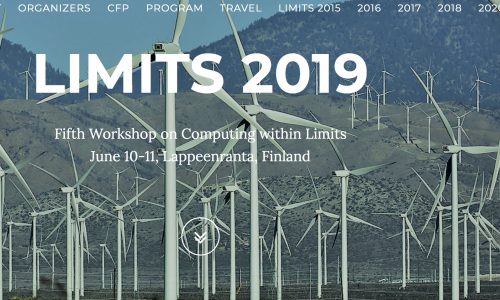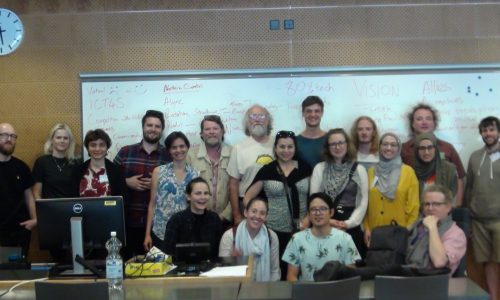Blog: Designing the Swedish Citizen Observatory: Design Opportunities and Challenges
In the beginning of June, Teresa C. Pargman from Stockholm University presented at LIMITS 2019. LIMITS is an annual international workshop that brings together a community of scholars from computer science and engineering, information science, social science, ecology, agriculture, and earth sciences to explore how computing can contribute to the overall process of transitioning to a future in which the well-being of humans and other species is the primary objective (Nardi et al. 2019). This year the workshop was co-hosted with the ICT4S (Information and communication technologies for Sustainability) conference and it focused on the design and development of sustainability interventions and transformative change in complex socio-technical and ecological systems. Taking a lens on sustainability economics the opening keynote highlighted the interest of conceptualizing sustainability interventions and transformative change from a systems thinking perspective. In this context, the interventions designed and implemented within the Swedish Demo Case raised a lot of interest from the audience.

The LIMITS participants were eager to know about the potential and the challenges of co-creating citizen observatories in relation to mobilizing action toward the environment via citizens’ gathered data. Questions from the audience created a great opportunity for Teresa to explain the design process, the methodology applied and the values underpinning the creation and implementation of the Swedish Citizen Observatory:VattenFokus.
Teresa also took the chance to explain how the Swedish Citizen Observatory contributed to first open a less formal dialogue between citizens and local environmental authorities that later on became key for the development of social relationships between the different actors involved. Helping to establish and develop relationships between the actors involved in the citizen observatory was crucial for the honest and engaged conversations that afterward started on topics like: the accuracy and scientific value of the citizen’s data gathered; the possibility for water authorities to include new methods like “exploratory fishing” or other that can provide additional information to the data already collected by the county; the interest of engaging with other local communities in the region and with non-governmental organizations committed to the conservation of water quality in Sweden.
During the presentation, Teresa took the time to also explain the types of sustainability interventions (i.e., water blitz in cooperation with civil society and the monthly measurements taken by local communities) designed so researchers and designers can work together with the citizens and their communities. She also mentioned the great need to think again about how to design interventions able to engage environmental authorities and policy makers over time. It seems that much is yet to be done in this respect. Finally, Teresa’s talk concluded by underscoring the great potential of designing Citizen Observatories with citizens and for local communities (i.e., community environmental needs, concerns and suggestions). She also mentioned the design challenge of configuring and shaping through participatory design and action-research sustainable socio-technical environmental observatories. On this note, our work, already available online here, puts much emphasis on building into the design process an inherent flexibility wherein diverse tools, methods, constellations of actors could be adapted to changing needs and contexts of the citizen observatory.

The article is available here: Teresa Cerratto Pargman, Somya Joshi, and Uta Wehn. 2019. Experimenting with Novel Forms of Computing: The case of the Swedish Citizen Observatory for Water Quality Conservation. In Proceedings of the Fifth Workshop on Computing within Limits (LIMITS ’19). ACM, New York, NY, USA, Article 8, 10 pages. DOI: https://doi.org/10.1145/3338103.3338111
